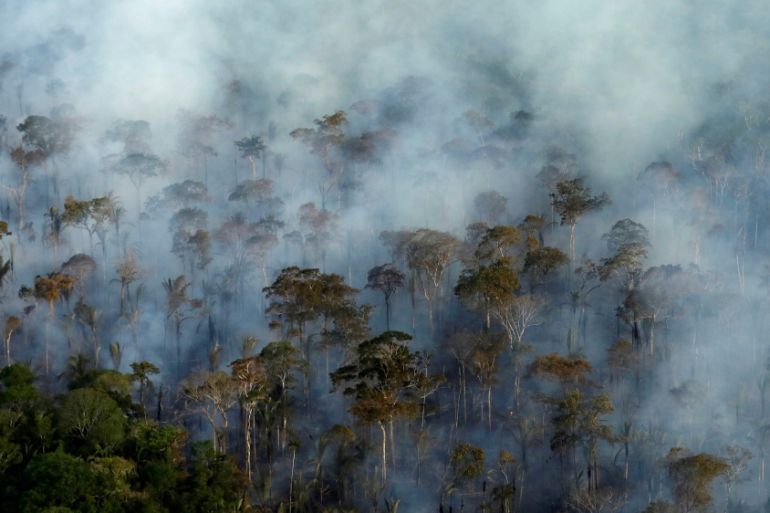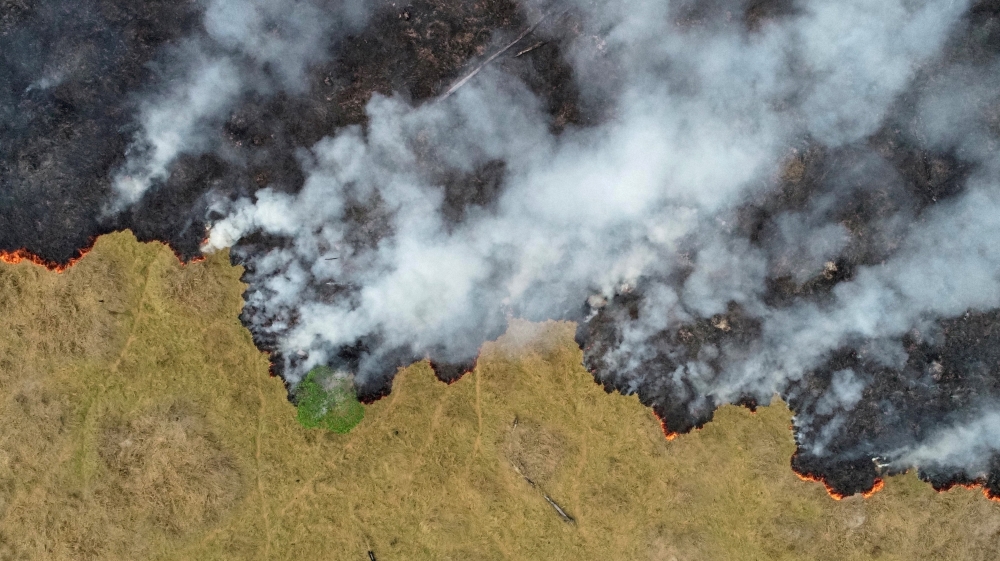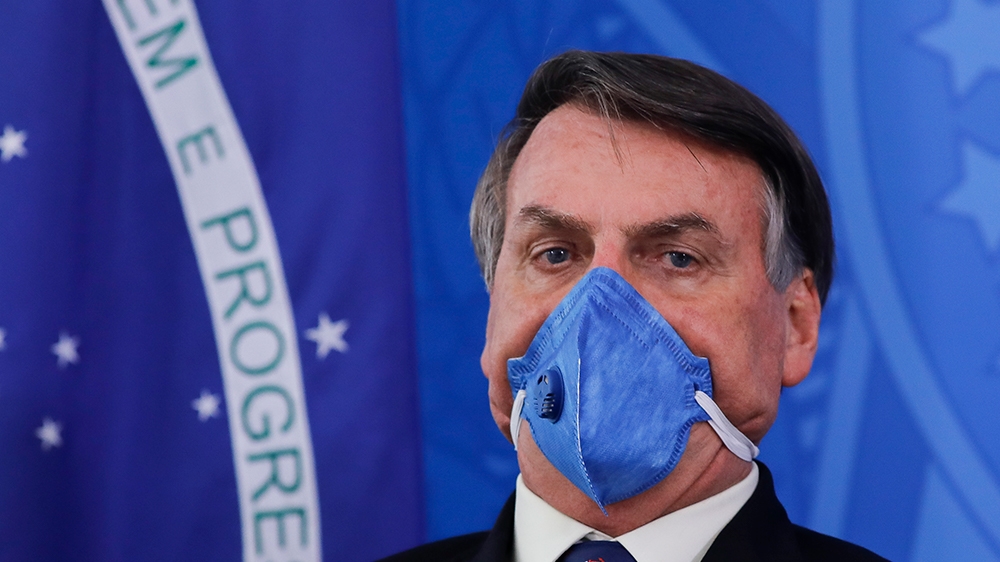Amazon fires rage in early August as fears of mass blazes mount
Data from Brazil’s space agency suggests fires in the Amazon are on track for a seven percent increase over last year.

Fires in the Brazilian Amazon have surged far in August, government data on Friday showed, outstripping the same period of 2019 and renewing concerns about the destruction of the world’s largest rainforest, which is a critical bulwark against climate change.
Brazilian space research agency INPE recorded 5,860 fires in the Amazon in the first six days of August, a seven percent increase from the same period of last year. The data set is small and daily variation can be considerable, but the trend suggests this month may be on par with a year ago – the worst August in nine years.
Keep reading
list of 4 itemsEvacuation orders issued as wildfire grows near Canada’s Alberta oil patch
Energy summit seeks to curb cooking habits that kill millions every year
Thousands evacuate as wildfire grows ‘dramatically’ in western Canada
Witnesses driving on Thursday night along the BR-319 highway from Porto Velho, Rondonia, towards Humaita, in the state of Amazonas, spotted small fires crackling along the side of the road, with smoke hanging heavy over the asphalt.

Some of the areas burned last year were now being used for cattle raising. Fire is commonly used across the Amazon to clear land for pasture.
The Brazilian Amazon lost 9,205sq km (3,554sq miles) of vegetation in the 12 months ending in July, according to data from the country’s space agency. That was largely due to a surge of fires in August and September last year.
The overall loss was 34 percent greater than that of the prior 12-month period.
The data was produced by Brazil’s DETER monitoring system, which provides daily deforestation alerts based on satellite images. Data from another system named PRODES, which relies on more detailed satellite images and records more of the deforestation, will be released by the end of the year.
Both are administered by Brazil’s space institute, which tabulates annual deforestation starting with August, when the dry season starts and farmers and loggers traditionally start using fires to clear land.
“If the variation between DETER and PRODES figures remains at the historical average, we could have about 13,000 square kilometers of deforestation, the highest rate since 2006 and three times more than the National Climate Change Policy target for 2020,” said the Climate Observatory, comprised of more than 30 non-governmental groups.
“This is not because of government incompetence in combating devastation; it has been happening because the Bolsonaro administration’s agenda is to actively promote devastation,” the statement added. “This is not incompetence; it’s a design.”

Environmental advocates blame right-wing President Jair Bolsonaro’s vision of economic development in the Amazon for emboldening illegal loggers, miners and land speculators to destroy the forest. Bolsonaro says more mining and farming are needed in the region to lift people out of poverty.
Bolsonaro came to office promising to open more of the Amazon to development, such as farming and mining. But international concern has led investors to try to distance themselves from the deforestation and to pressure the government to take more action against it.
Following global pressure from foreign governments and investors, Bolsonaro has deployed the military to combat deforestation and in May he stationed troops in several states ahead of the so-called burning season.
DETER data for July registered a decrease from the same month in 2019, when deforestation surged to the highest monthly level since at least mid-2015.
Criminals often extract valuable wood from protected parts of the jungle before setting fire to the land, increasing its value for farming and ranching. Large natural fires are very rare in a healthy rainforest.